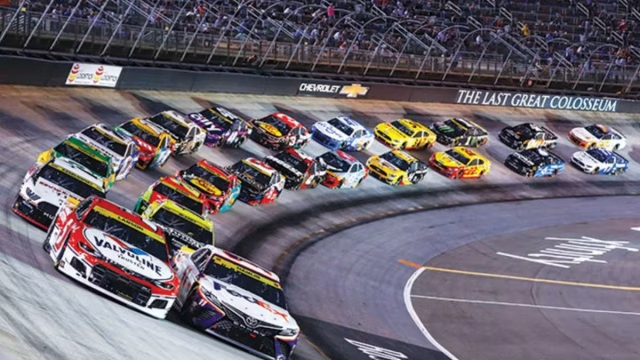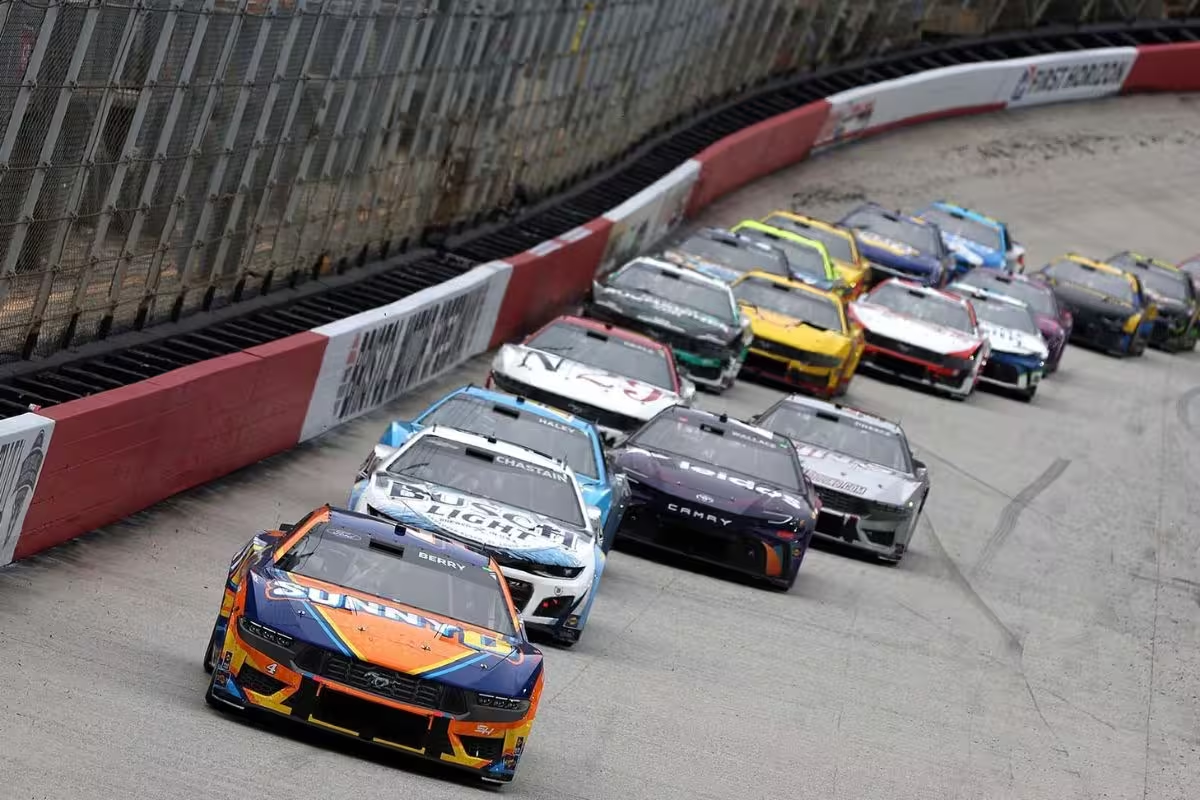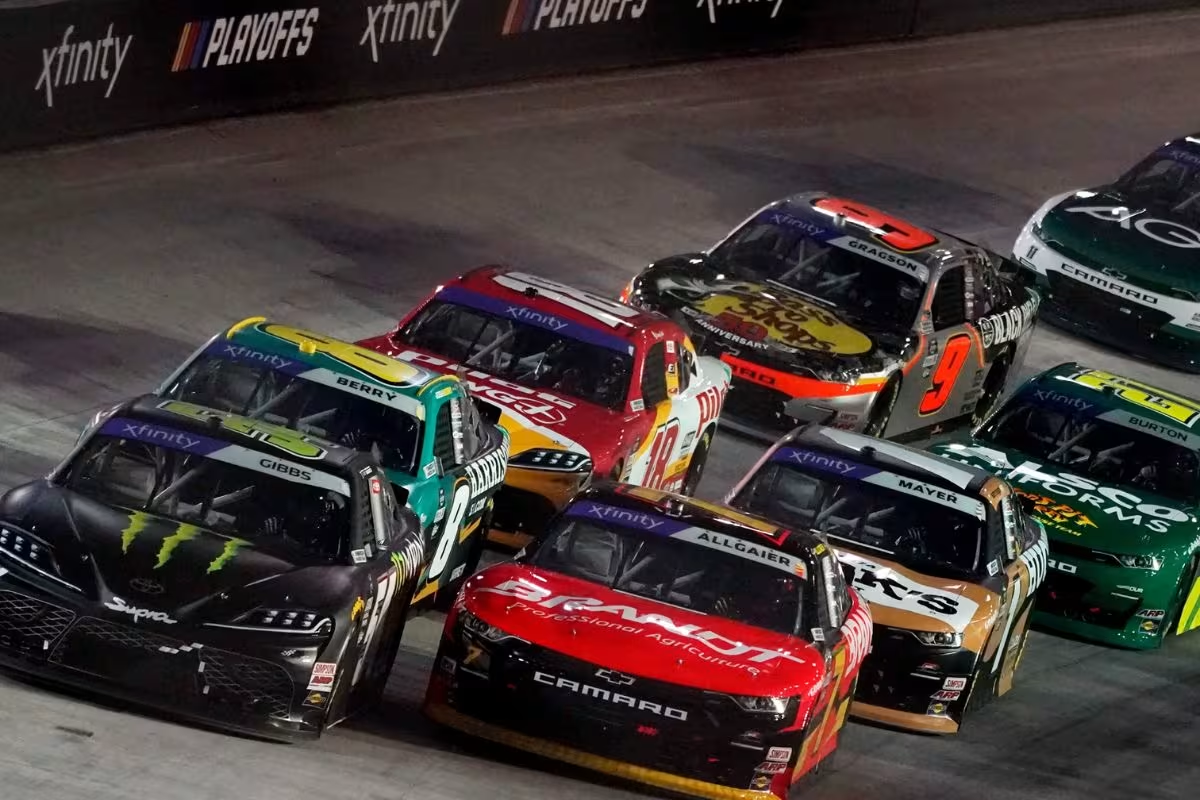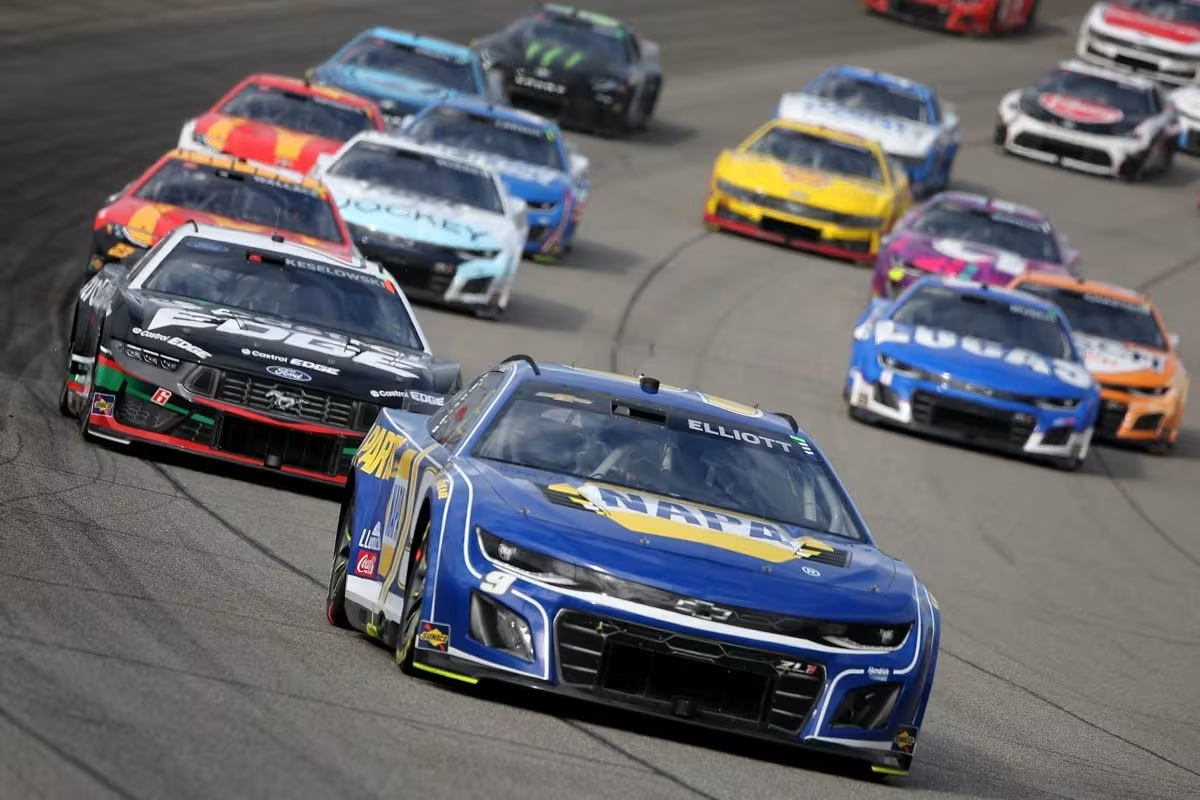Bristol Motor Speedway’s Downfall: Bristol Motor Speedway once celebrated for its thrilling unpredictability, now finds itself grappling with a transformed identity that raises critical questions about the essence of racing. The alterations implemented since 2007, while aimed at enhancing competition, have inadvertently stripped the venue of its vibrant character, leading to a more homogenized experience. As fans reminisce about the fierce rivalries and dramatic finishes that defined the sport, one must consider whether the pursuit of modernization has come at the cost of authenticity. What remains to be seen is how the sport can reconcile these changes with the passionate roots that once made it thrive.
Key Highlights
- Changes to Bristol’s track design have diminished the close competition and thrilling moments that defined its historical charm.
- The introduction of advanced technology and cars has shifted focus from driver skill to mechanical performance, impacting race unpredictability.
- Fans express dissatisfaction over the loss of traditional racing elements, leading to concerns about the authenticity of the current racing experience.
- The racing dynamics have evolved, resulting in fewer lead changes and less excitement during events, impacting spectator engagement.
- Ongoing discussions about potential rule changes reflect a desire to restore the competitive spirit and legacy of Bristol Motor Speedway.
Bristol Spring Race and High Expectations for 2023
Anticipating a revival of its storied past, fans and analysts alike approached the Bristol Spring Race in March 2023 with high expectations. The allure of Bristol Motor Speedway, once a bastion of high-octane competitiveness and nail-biting finishes, had seemingly rekindled interest as the event loomed. The nostalgia for the “bump-and-run” style racing of yesteryears overshadowed the contemporary narrative of broader racing surfaces and tactical overtaking.
However, the race revealed a disconcerting truth: the old-school feel was a fleeting illusion. The Bass Pro Shops Night Race following the Spring event sharply contradicted the notion that Bristol could return to its glorious past. Despite the modifications made back in 2007 by Speedway Motorsports Inc. (SMI), which aimed to improve passing opportunities on the now-wider concrete surface, the anticipated transformation proved largely ineffective.
Analysts noted that the dynamics of racing at Bristol had become too predictable, with the essence of aggressive competition increasingly diluted. As the season progressed, it became evident that the attempts to resurrect the spirit of Bristol were met with frustration.
Multiple experimental changes, aimed at restoring the iconic racing style, ultimately failed to recapture the authenticity that once defined the venue. The consensus among experts signals a sobering reality: the old Bristol may indeed have been lost to the annals of time, leaving a void that challenges the very foundation of what makes racing exhilarating.
SMI’s 2007 Changes and Unanswered Questions
The modifications implemented by Speedway Motorsports Inc. (SMI) in 2007 marked a pivotal shift in the character of Bristol Motor Speedway, aiming to improve the racing experience by widening the track’s surface and introducing a variable banking system. These changes were intended to boost safety and increase overtaking opportunities, yet they have provoked a mixed response from fans and drivers alike.
The decision to widen the track by three feet was a considerable departure from its traditional narrow configuration, which had fostered the tight, competitive racing that characterized Bristol’s golden era. The introduction of a variable banking system—designed to allow for multiple racing lines—was intended to create more dynamic racing conditions. However, this reconfiguration has led to questions regarding its effectiveness in producing the close-quarters racing that once defined the venue.
Moreover, the true impact of these changes remains an open question. While SMI’s financial investment into the infrastructure of the speedway has modernized its facilities, the essence of racing—the thrilling, heart-pounding battles that fans cherished—has been called into question.
Have the alterations succeeded in boosting the spectacle, or have they diluted the very spirit of short-track racing? The ongoing discourse surrounding these modifications suggests a longing for the days when Bristol was synonymous with raw, unfiltered competition, leaving many to wonder if the heart of racing has truly been lost in the pursuit of modernization.
Lead Changes and Questions from Experts
Amidst the differing narratives surrounding Bristol Motor Speedway, recent fluctuations in lead changes have reignited debates about the track’s competitive landscape. The Spring Race earlier this year had fans buzzing as it set a track record for lead changes, suggesting a resurgence of excitement. However, the subsequent event featured a mere eight lead changes, a clear reminder that Bristol’s competitive edge remains elusive.
The fallout from Kyle Larson’s dominant performance has prompted critical reflections within the racing community. A pivotal question emerged during the September 23rd episode of AskDBC: “Is Bristol better with one groove or multiple grooves?” This inquiry reflects a broader concern regarding the track’s ability to foster competitive racing. Freddie Kraft, spotter for the #23 team in the Cup Series, advocated for a return to a single-groove racing style, emphasizing the thrill of drivers battling for position on the bottom line.
“All Bristol! Give me locked on the bottom knocking each other out of the way, but the problem is we can’t do that right now… Like, locked on the bottom, you cannot move the guy… So, you know, if we can ever get back to just run in the bottom where we can rattle each other’s cages a little bit. That’ll be my ideal scenario.” – Kraft
As Bristol grapples with these existential questions, the future of its racing identity hangs in the balance, prompting stakeholders to reflect on what truly constitutes competitive racing in this storied venue.
Nostalgia for the Old Bristol
Long-time fans of Bristol Motor Speedway often look back with fondness to a time when the track was synonymous with intense competition and dramatic finishes. This nostalgia is poignantly depicted by moments like Dale Earnhardt’s infamous spin of Terry Labonte in 1999, a maneuver that encapsulated the spirit of “old Bristol.”
Such iconic events foster a yearning for a racing environment characterized by unpredictability and raw emotion—elements that many believe have faded from the current racing landscape.
The conversation surrounding this nostalgia was recently reignited by Brett Griffin’s inquiry about reinstating the track’s former glory. His question, “But why can’t you tear it up and make it like old Bristol?” resonates with fans who feel that the essence of racing has been compromised.
Kraft’s candid acknowledgment of financial constraints highlights a crucial barrier to revitalizing the track. This exchange emphasizes a broader sentiment within the racing community that the thrill of the sport has been diluted, leaving behind a yearning for the fierce rivalries and close-quarters racing that once defined Bristol.
“I mean, you could. I would imagine money would be a major factor…” Wrapping up the dialogue with some much-needed banter, Kraft then mused, “Plus Dale (Earnhardt Jr) drank a lot of beer on Friday night.” – Kraft
As racing evolves, the longing for the past reveals a deeper concern: have we sacrificed authenticity for modernity?
The memories of “old Bristol” serve as a reminder of what is at stake, prompting discussions on how we can bridge the gap between nostalgia and the present. Ultimately, the challenge remains to honor the track’s storied history while endeavoring to create a similarly exhilarating future.
Next-Gen Car, Tires, and PJ1 Impact
Racing dynamics at Bristol Motor Speedway have been greatly altered by the introduction of the Next-Gen car, along with its wider 18-inch tires and upgraded brake package. This new configuration has resulted in increased grip on the racetrack, allowing drivers to maintain higher speeds through corners.
However, as Kyle Busch articulated, the anticipated tire wear that typically provides tactical depth to races has largely been absent. The expectation was that wider tires would lead to more grip but also to considerable falloff during longer runs, creating opportunities for drivers to devise varying strategies. Instead, the current tire composition has not delivered the expected degradation, which diminishes the complexity and excitement of racing.
“I think we’ve all kind of said that, when the tire got wider, we all knew it was going to produce more grip… We all expected it to be softer so it would wear, and it would wear out and then you would have less grip over the course of a run and have some falloff… But unfortunately, we haven’t seen that.” – Busch
Moreover, the introduction of softer ‘Option’ tires has provided a glimpse of what might have been. These tires, which were showcased in North Wilkesboro and later in Richmond, did exhibit wear characteristics that could improve competition if regularly integrated into the series. Yet, NASCAR’s inconsistent rollout raises questions about its commitment to fostering competitive parity.
Compounding these changes is the use of PJ1 Trackbite compound, which has been applied to the lower groove at Bristol since 2016. While it improves traction, it also creates a scenario where the traditional racing lines are altered, further impacting driver tactics and race dynamics.
The cumulative effects of these innovations have led to a track environment that, while technologically advanced, may lack the unpredictability and thrill that once defined Bristol, prompting concerns about the authenticity of racing at this iconic venue.
News in Brief: Bristol Motor Speedway’s Downfall
The evolution of Bristol Motor Speedway, marked by considerable modifications and technological advancements, raises critical questions about the essence of racing. While efforts to improve competition have led to increased predictability and a sanitized environment, the nostalgia for the vibrant rivalries and dramatic outcomes of the past remains palpable among enthusiasts. Ultimately, the path of racing culture at Bristol challenges stakeholders to balance modernity with the authenticity that once defined the sport, ensuring its enduring legacy.
ALSO READ: The Future of Bristol’s Eliminated Drivers: What Lies Ahead After the Playoffs?



